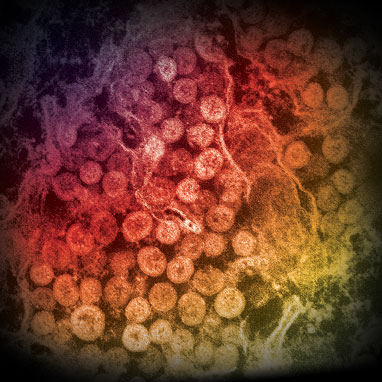Using AI to control energy for indoor agriculture
30 September 2024
Published online 21 December 2015
Camels are the hosts in which new strains of the Middle Eastern Respiratory Syndrome Coronovirus (MERS-CoV) evolve and pass to humans.

© Cynthia Goldsmith/Azaibi Tamin
The MERS Coronovirus, which emerged in Saudi Arabia in 2012, has infected more than 1,600 people, nearly 600 fatally. The majority of the cases struck in the Middle East, and though infections have been reported in countries across Europe, Asia and Africa, they have all originated in the region.
Increasing evidence has pointed to one-humped camels as the intermediate hosts in the spread of MERS, but this has so far been undefined. The issue is sensitive because of the cultural and economic significance of the animals to the region.
Now, five major lineages of MERS-CoV common to both camels and humans have been identified through phylogenetic analysis by a team of scientists from Saudi Arabia, Egypt, Australia and Hong Kong.
The research published in Science1 suggests that multiple strains of MERS-CoV co-circulated at high prevalence rates with frequent co-infections in camels, producing new lines of infection.
Human infection has occurred in separate transmissions at each stage that a new line in camels has developed.
“This paper provides the most extensive coverage of the evolution of the MERS coronavirus in camels, which are the active hosts in spreading this virus to humans. Our work allows a clearer picture of the development of MERS in its reservoir host,” says Yi Guan, director of the State Key Laboratory of Emerging Infectious Diseases and the Center of Influenza Research, University of Hong Kong, and co-author of the paper.
Genome sequences from public databases were combined with 67 genomes sequenced from MERS positive swabs taken from camels at slaughterhouses, farms or wholesale markets in Jeddah, Riyadh and Taif between May 2014 and April 2015. More than half of these camels were also infected with camelid alpha coronavirus, and two of the camels had a third betacoronavirus co-infection.
MERS-CoV from Saudi Arabian camels was found within each of the five lineages.
The viruses sequenced from the swabs were associated with the most recent lineages and show that the latest version of MERS, lineage 5, evolved in camels from recombinant virus comprising different parts of lineage 3 and 4.
Lineage 5 is associated with recent infections in South Korea, which experienced a virulent outbreak of MERS from May to July this year, after a patient contracted the virus while travelling in the Middle East and fell ill on his return home.
The phylogenetic data suggest the virus infecting this patient was obtained from camels, because of the high similarity with a camel virus sampled by the team in March 2015, although the exact transmission details are not clear.
“This paper really unambiguously confirms the role of dromedary camels in maintaining MERS-CoV in the Arabian Peninsular over the last few years. It shows that the human cases since 2013 have been the result of repeated jumps from camels with limited human to human transmission,” says Andrew Rambaut, personal chair in Molecular Evolution, at the University of Edinburgh.
What this research means, is that the best form of control for MERS this season is control of the virus in camel populations and human interaction with them.
“The MERS virus is widespread in camels and more prevalent in younger camels,” says Yi Guan. “This clearly emphasizes the need for greater separation of, especially young, camels and humans. Enhanced quarantine and biosecurity measures should be implemented.”
Yi Guan adds that MERS-like viruses appear to have been present in camels for some time, “so identifying what led to the appearance of these human infections and why this virus causes such severe illness need to be investigated.”
But the key to understanding the basis of MERS going forward, according to Andrew Rambaut, is in investigating the disease as a livestock disease — through routine and continuing surveillance of the virus in camels.
doi:10.1038/nmiddleeast.2015.247
Stay connected: